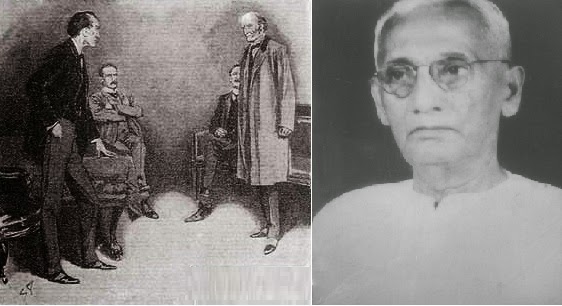"আমার ঘর হইতে আঙিনা বিদেশে" - এই কথাটি যেন লেখক কালকূটের জীবনে সার্থকভাবে খেটে যায়। ঘুরে-বেড়াতে চাইলে কালকূট আর কিছু চাইতেন না। কবিগুরুর 'কেন পান্থ এ চঞ্চলতা' - এ প্রশ্নের উত্তর খোঁজার জন্যে তিনি সারাজীবন ঘুরে বেরিয়েছিলেন ভারতবর্ষের নানা মানুষের মেলায়, নানা বিচিত্রের বর্ণিল পটভূমিতে।
কালকূটের লেখা আগে যাঁরা পড়েছেন, তাঁরা জানেন যে সেগুলি কোনটাই ঠিক প্রচলিত অর্থে 'ট্রাভেলগ' নয় - অর্থাৎ স্রেফ 'ভ্রমণোপন্যাস' বললে তাদের পুরো পরিচয়টা যেন সম্পূর্ণ হয়না। তাঁর রচিত উপন্যাসগুলির বৃত্তান্তে কখনো ব্যক্তিগত অ্যাডভেঞ্চারের বিবরণী থাকেনি - অন্যদিকে গল্পে গ্রথিত ভ্রমণ নির্দেশিকাও ছিলোনা তাঁর রচনাগুলি। বরং বলা যেতে পারে তাঁর এই জাতীয় রচনার মূল কথাটি হলো 'মানুষ' - সেটা তাঁর সমগ্র সাহিত্যিক ব্যক্তিত্বের প্রধান অন্বেষা - সেটাই তাঁকে নিয়ে গেছে মানুষের মেলায়, মানুষ খুঁজতে। সুতরাং ভ্রমন-রসের থেকেও তাঁর লেখাগুলি ভরপুর ছিলো আসল 'মানব-রসে'।
কালকূট শব্দের আভিধানিক অর্থে 'প্রাণঘ্ন বিষ'। এই ছদ্মনামটিতে বিষ এবং বিষজর্জর ব্যক্তিটি এক হয়ে গেছেন। তিনি প্রত্যক্ষ করেছিলেন 'অমৃতের পুত্র' হয়ে জন্মালেও বেশিরভাগ মানুষই অমৃতময় মূর্তি নয়। তাই তাঁর লজ্জ্বা সমস্ত মানুষের হয়েই। তাই বিনয়ের সঙ্গে তিনি স্বনাম নির্বাচন করেছেন, 'কালকূট'। বিষামৃতমধুর-তিক্তের সন্ধানে তাঁর যাত্রা - যে বিষ বদলে গিয়ে হবে সুধা, সেই বিষকেই নামবাচক বিশেষ্যে রুপান্তরিত করেছেন এই লেখক।
'অমৃতকুম্ভের সন্ধানে', 'খুঁজে ফিরি সেই মানুষ' ধারারই শেষ লেখা হলো 'কোথায় পাবো তারে' উপন্যাসটি, যেখানে মানুষের আর্তি, আকুলতা আরও গভীরতর, বর্নাঢ্য রূপে প্রকাশিত হয়ে উঠেছে। তবে 'কোথায় পাবো তারে' উপন্যাসটি তাঁর সমস্ত রচনার থেকে কিছুটা আলাদা ধরনের লেখা। এই লেখায় তেমন কোনো নির্দিষ্ট পটভূমি নেই। কোন একটা গোণা-গাঁথা সপ্তাহ বা কালখণ্ডও এখানে ব্যবহৃত হয়নি। নদী, প্রান্তর, স্রোতের চলিষ্ণুতা এবং লাল কাঁকরের স্তব্ধতা - সর্বত্র সঞ্চারমান একটি পথপাগল পথিকের বিচিত্র মাধুকরী এ লেখায় ফুটে উঠেছে। বাংলার নিজস্ব বাউলের মতো এ-মেলা থেকে সে-মেলা, আনগাঁয়ে, ভিনগাঁয়ে - পায়ে পায়ে ধুলো উড়িয়ে, সেই ধুলোয় ধুসর হতে হতে এগিয়ে চলাই যেন লেখকের একমাত্র ইচ্ছা।
নদীর জলে সবকিছু ধুয়ে মুছে যায়। এক নদী বয় মাটিতে, আরেক নদী বয় মনে। 'কালকূট' দুই নদীতেই অবগাঢ় হয়েছেন। নদীর বর্ণনায় অক্লান্ত লেখক বুঝি পূর্ববঙ্গের বাল্যস্মৃতির দ্বারা প্রাণিত, আবার পশ্চিম প্রান্তের রক্তিম কাঁকর-ধূলির বর্ণনায় বুঝি বা ফুটে ওঠে তাঁর প্রৌঢ়ত্ব। কিন্তু এতো বর্ণনা, এতো পট, আর পটান্তর কিসের জন্যে ? 'তারে' এই সর্বনাম কাকে আড়াল করে রেখেছে? কেনই বা তার জন্যে এই আকুলতা? সেই সব কথা জানতে হলে পড়তেই হবে তাঁর সেই অমর রচনাটি।
 |
| সমরেশ বসু (ডিসেম্বর ১৯২৪ - মার্চ ১৯৮৮) |
কালকূট শব্দের আভিধানিক অর্থে 'প্রাণঘ্ন বিষ'। এই ছদ্মনামটিতে বিষ এবং বিষজর্জর ব্যক্তিটি এক হয়ে গেছেন। তিনি প্রত্যক্ষ করেছিলেন 'অমৃতের পুত্র' হয়ে জন্মালেও বেশিরভাগ মানুষই অমৃতময় মূর্তি নয়। তাই তাঁর লজ্জ্বা সমস্ত মানুষের হয়েই। তাই বিনয়ের সঙ্গে তিনি স্বনাম নির্বাচন করেছেন, 'কালকূট'। বিষামৃতমধুর-তিক্তের সন্ধানে তাঁর যাত্রা - যে বিষ বদলে গিয়ে হবে সুধা, সেই বিষকেই নামবাচক বিশেষ্যে রুপান্তরিত করেছেন এই লেখক।
 |
| প্রথম সংস্করণ ডিসেম্বর, ১৯৬৮ |
নদীর জলে সবকিছু ধুয়ে মুছে যায়। এক নদী বয় মাটিতে, আরেক নদী বয় মনে। 'কালকূট' দুই নদীতেই অবগাঢ় হয়েছেন। নদীর বর্ণনায় অক্লান্ত লেখক বুঝি পূর্ববঙ্গের বাল্যস্মৃতির দ্বারা প্রাণিত, আবার পশ্চিম প্রান্তের রক্তিম কাঁকর-ধূলির বর্ণনায় বুঝি বা ফুটে ওঠে তাঁর প্রৌঢ়ত্ব। কিন্তু এতো বর্ণনা, এতো পট, আর পটান্তর কিসের জন্যে ? 'তারে' এই সর্বনাম কাকে আড়াল করে রেখেছে? কেনই বা তার জন্যে এই আকুলতা? সেই সব কথা জানতে হলে পড়তেই হবে তাঁর সেই অমর রচনাটি।
এই পোস্টে কালকূটের 'কোথায় পাবো তারে' উপন্যাসটি থেকে প্রথম কিছু পরিচ্ছেদ তুলে ধরা হলো - ভালো লাগলে পরে আরও প্রকাশ করা যেতেই পারে......
 |
| কোথায় পাব তারে (প্রথম ৫৪ পৃ:) |





















